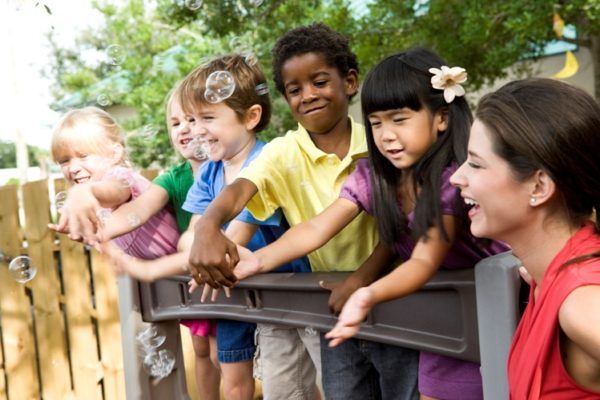Celebrating the Differences That Make All Children Unique!
Every person is unique, and differences in kids are worth celebrating! Kids are observant and often notice differences—in others or in themselves.
How do you help children talk about differences, and understand how to interact with others?

Here are some tips, but remember that every situation requires a different approach. The best rule of thumb is to be respectful and inclusive.
Being respectful means asking kind questions and speaking to everyone as equals.
Being inclusive means making an effort to include everyone, even if that means changing some plans or the way your child plays.
Acknowledge differences.
If children point out a difference in others or themselves, sometimes the natural reaction is to shy away or act like a difference doesn’t exist. But differences are not something to hide! They can be respectfully noticed and celebrated. If a child points out someone’s differences (“Mom, that person is walking differently”), confirm and correct their observations (“Yes, they are using a cane to help them walk!”)
Help children see their strengths.
When children or their friends have a difference or disability, they may only see what is difficult for them or others. While they may face challenges, they also have so many strengths that should be celebrated. Maybe they’re great at reading, or can run really fast, or excel at art. Whatever their strengths may be, point them out and celebrate them!
Explain why differences exist.
Children are curious and looking for answers, so sometimes a simple explanation can help. For example, glasses help children see more clearly, wheelchairs help children move on their own.
Challenge what is “normal.”
Sometimes children will point out that something is “not normal,” or they may call something “weird”. For example, if someone speaks differently, they may say they speak “weird”. You can reply by saying something like, “their voice might sound different than what you have heard before, but that’s okay!”
Encourage children to include everyone in play.
Play is a great way for children to bond, so it can be a perfect time to include others and celebrate differences in kids. Consider accommodations to make play accessible to all! That may mean finding an accessible environment, or somewhere that is sensory friendly. It may help to reach out to a child’s parent and ask them how to make the environment safe and accessible for their child.
Teach your child what is not a part of play.
Children are curious, and want to touch things to explore and learn more. However, there may be some items that are off limits. For example, if they have a friend who uses a power wheelchair, teach them that touching the wheelchair’s controls is off limits. The same goes for any other medical equipment that a child may use. A great way to find out more is to encourage children to ask first. For example, they can ask a friend, “How does this work?” or “Can I touch this?”
Consider invisible differences.
Conditions like ADHD, autism spectrum disorders, and dyslexia are just some examples of the many invisible differences in kids and disabilities children may have. Remind children that not every difference can be seen, but children still may need some extra help.
Talk to a child’s parents.
If you have questions about how to make something accessible for a child, or how to talk to your child about another’s differences, it may be appropriate to talk to the child’s parent. If you are having trouble figuring out how to explain what works best for your child to others, you can look to support groups or a child’s healthcare provider for a way to explain their needs.
Remember: everyone has their own differences, and they are what make us unique!
Help your child celebrate their differences and the differences of others.






